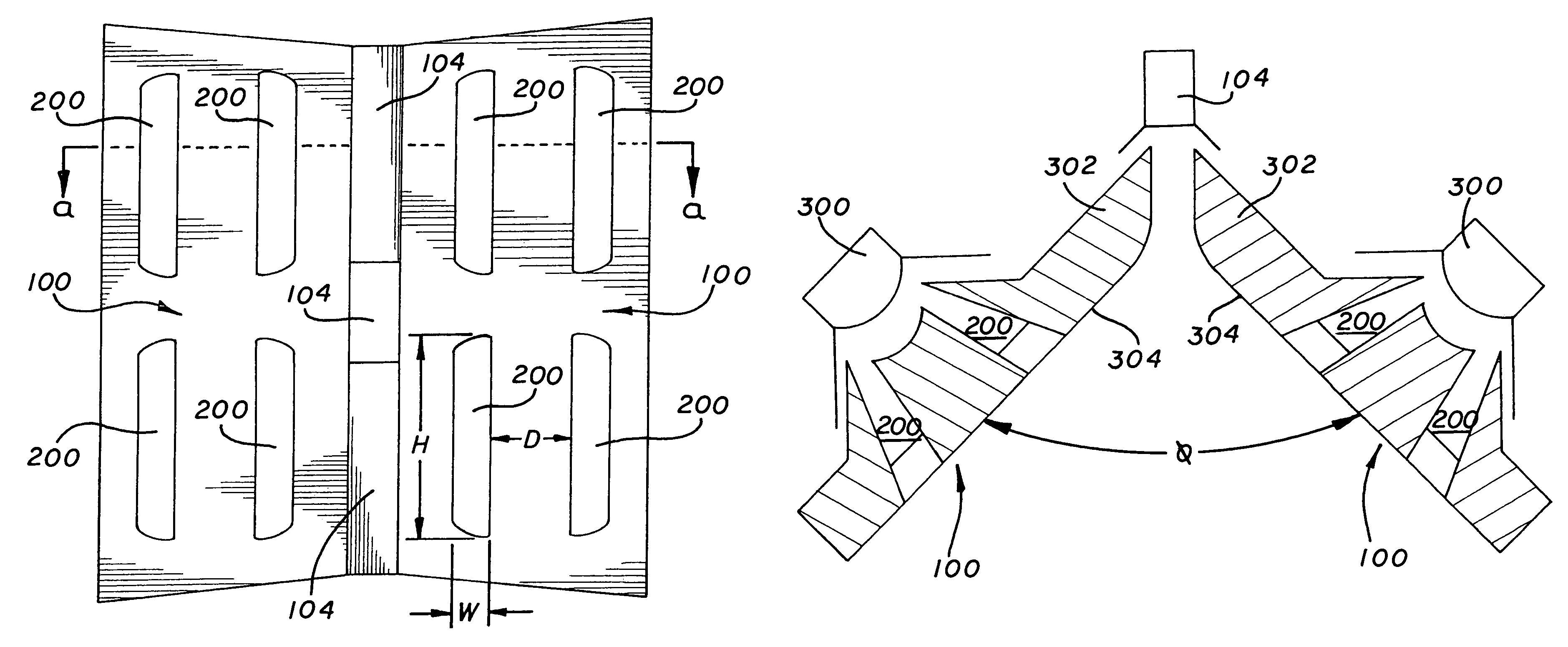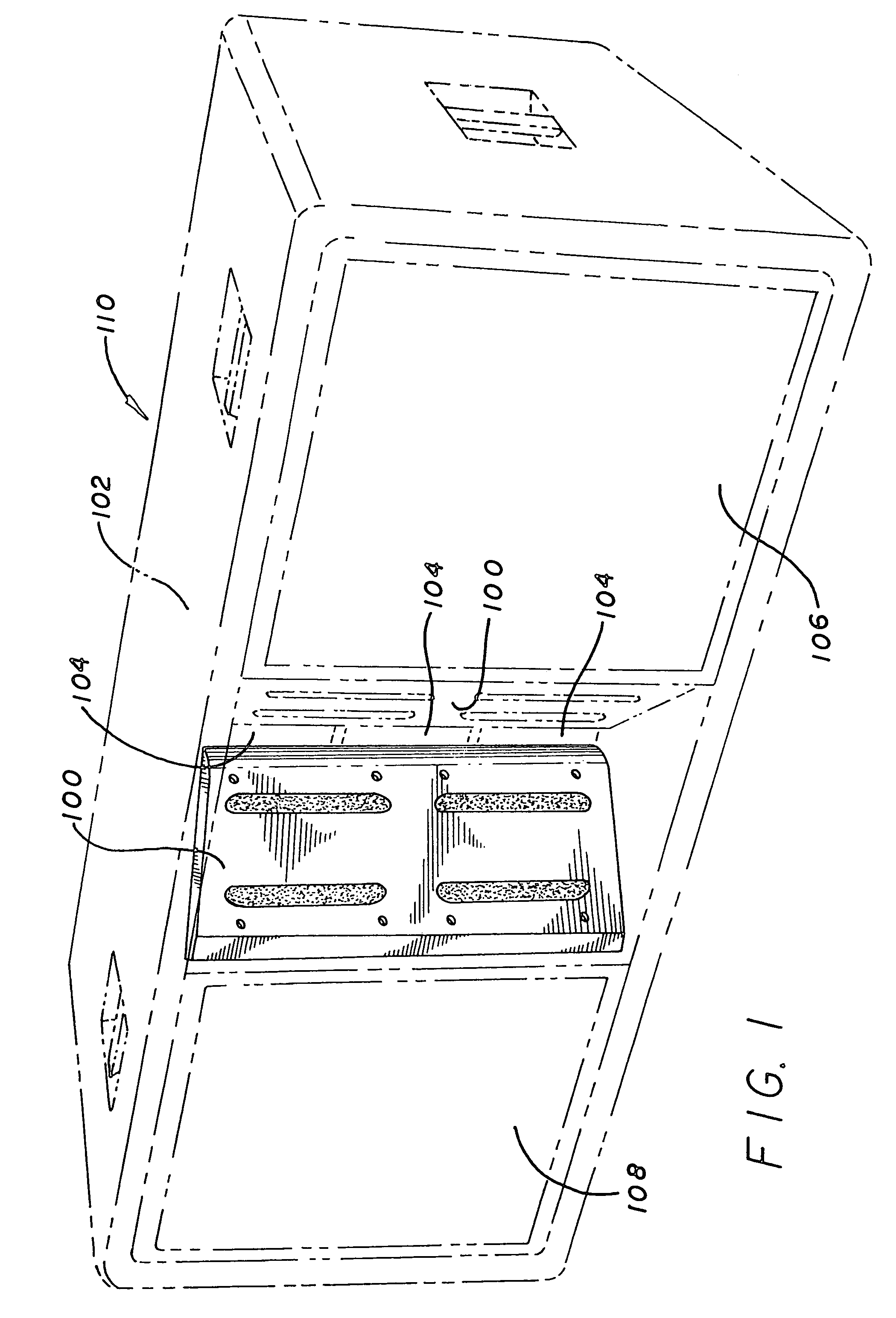System for integrating mid-range and high-frequency acoustic sources in multi-way loudspeakers
- Summary
- Abstract
- Description
- Claims
- Application Information
AI Technical Summary
Benefits of technology
Problems solved by technology
Method used
Image
Examples
Embodiment Construction
[0028]FIG. 1 is a perspective view of a multi-way loudspeaker 110 use two sound integrators or radiation boundary integrators (“RBIs”) 100. FIG. 1 illustrates the two RBIs 100 as they would appear positioned within a multi-way loudspeaker housing 102 (“housing”). In the exemplary line array speaker 110, a plurality of high-frequency sound sources 104 are stacked vertically in the mid-section of the housing 102. Two adjacent side walls (not shown) extend outwardly from the high-frequency sound sources 104 forming an angle relative to each other such that the high-frequency sound sources 104 are at the vertex of the two adjacent side walls. Flush within each of the side wall is at least one mid-range sound source (see FIG. 3). Each side wall is covered with the RBI 100 so that the high-frequency sound sources 104 are at the vertex of the two RBIs100. Besides the high frequency 104 and mid-range frequency sound sources, the housing 102 may also incorporate low-frequency sound sources 1...
PUM
 Login to View More
Login to View More Abstract
Description
Claims
Application Information
 Login to View More
Login to View More - R&D
- Intellectual Property
- Life Sciences
- Materials
- Tech Scout
- Unparalleled Data Quality
- Higher Quality Content
- 60% Fewer Hallucinations
Browse by: Latest US Patents, China's latest patents, Technical Efficacy Thesaurus, Application Domain, Technology Topic, Popular Technical Reports.
© 2025 PatSnap. All rights reserved.Legal|Privacy policy|Modern Slavery Act Transparency Statement|Sitemap|About US| Contact US: help@patsnap.com



